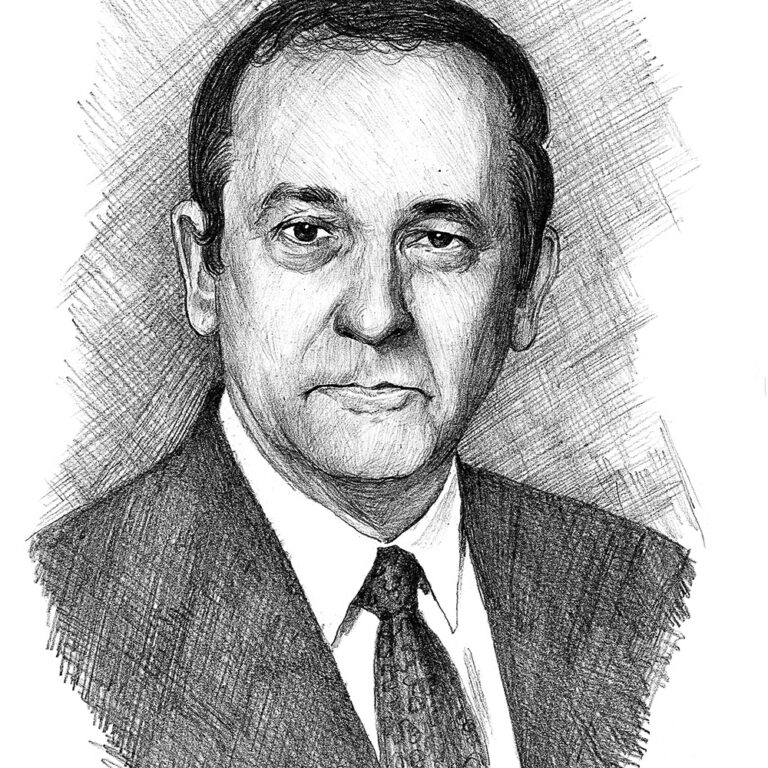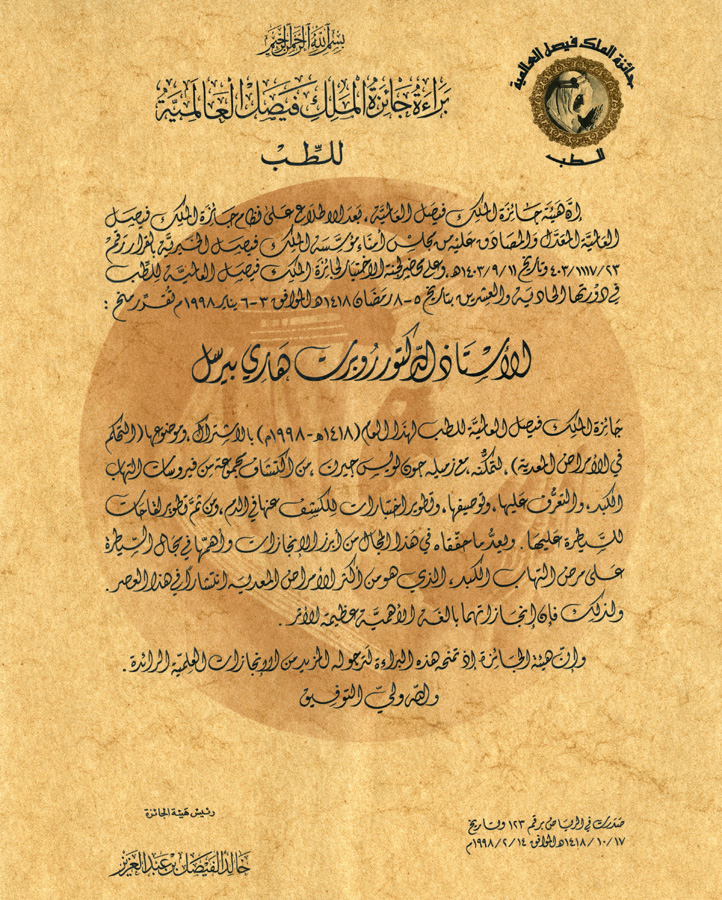

Professor Robert H. Purcell
King Faisal Prize in Medicine 1998 Laureate
Topic: "Control of Communicable Diseases "
It often takes a lifetime of hard work and persistence to make an impact on public health

Robert Purcell obtained a bachelor’s degree in Chemistry from Oklahoma State University in 1957, a master’s degree in biochemistry from Baylor University in 1960, and an MD from Duke University in 1962. After completing an internship in Pediatrics at Duke University Hospital, he joined the Epidemic Intelligence Service at the Centers for Disease Control (CDC) in Atlanta, Georgia, from 1963 to 1965. During that time, he carried out studies on respiratory viruses and mycoplasmal diseases before turning his attention to the study of hepatitis viruses at the National Institutes of Health (NIH) Laboratories in Bethesda, MD, where he became the Head of the Hepatitis Viruses Section of the Laboratory of Infectious Diseases at the National Institute of Allergy and Infectious Diseases in Bethesda, Maryland. In 1997, he joined the Senior Biomedical Research Services. He is also an adjunct Professor at several universities and a member of many medical, scientific and honor societies.
Professor Purcell authored and co-authored several books and more than 500 scientific articles, describing mainly his contributions to the discovery and characterization of the hepatitis viruses. His achievements include the first visualization of Hepatitis A virus (HAV) and the first serologic test for HAV, which helped in defining the epidemiology of this virus and its role in liver disease. His extensive laboratory and field research with Professor Gerin over the past three decades has led to the identification, characterization and screening of different hepatitis viruses and the development of vaccines to control most of them. His laboratory is currently working on the elucidation of molecular virology of these viruses.
Professor Purcell’s seminal contributions to the field of viral hepatitis earned him wide recognition. He received many other awards including the Gorgas Medal in 1977, the Distinguished Service Medal in 1978, the Distinguished Alumni Award from Duke University in 1978, the Squibb award of the Infectious Diseases Society of America in 1980, the Gold Medal Award of the Canadian Liver Foundation in 1984, and the Inventor’s Incentive Award of the Society for Experimental Biology and Medicine in 1984. He is also an elected fellow of the American Academy of Microbiology, and the US National Academy of Sciences.
This biography was written in the year the prize was awarded.
- He received many awards including:
- Research Science Award of the Hepatitis Foundation International in 1999.
- Distinguished Achievement Award from the American Association for the Study of Liver Diseases in 2000.



